Using Hasura Cloud with a Timescale Postgres database¶
Table of contents
- Introduction
- Step 0: Sign up or log in to Hasura Cloud
- Step 1: Create a Hasura Cloud project
- Step 2: Create a Postgres DB on Timescale (skip if you have an existing DB)
- Step 3: Allow connections to your DB from Hasura Cloud
- Step 4: Get the database connection URL
- Step 5: Finish connecting the database
- Next steps
Introduction¶
This guide explains how to connect a new or existing Timescale Postgres database to a Hasura Cloud project.
Step 0: Sign up or log in to Hasura Cloud¶
Navigate to Hasura Cloud and sign up or log in.
Step 1: Create a Hasura Cloud project¶
On the Hasura Cloud dashboard, create a new project:
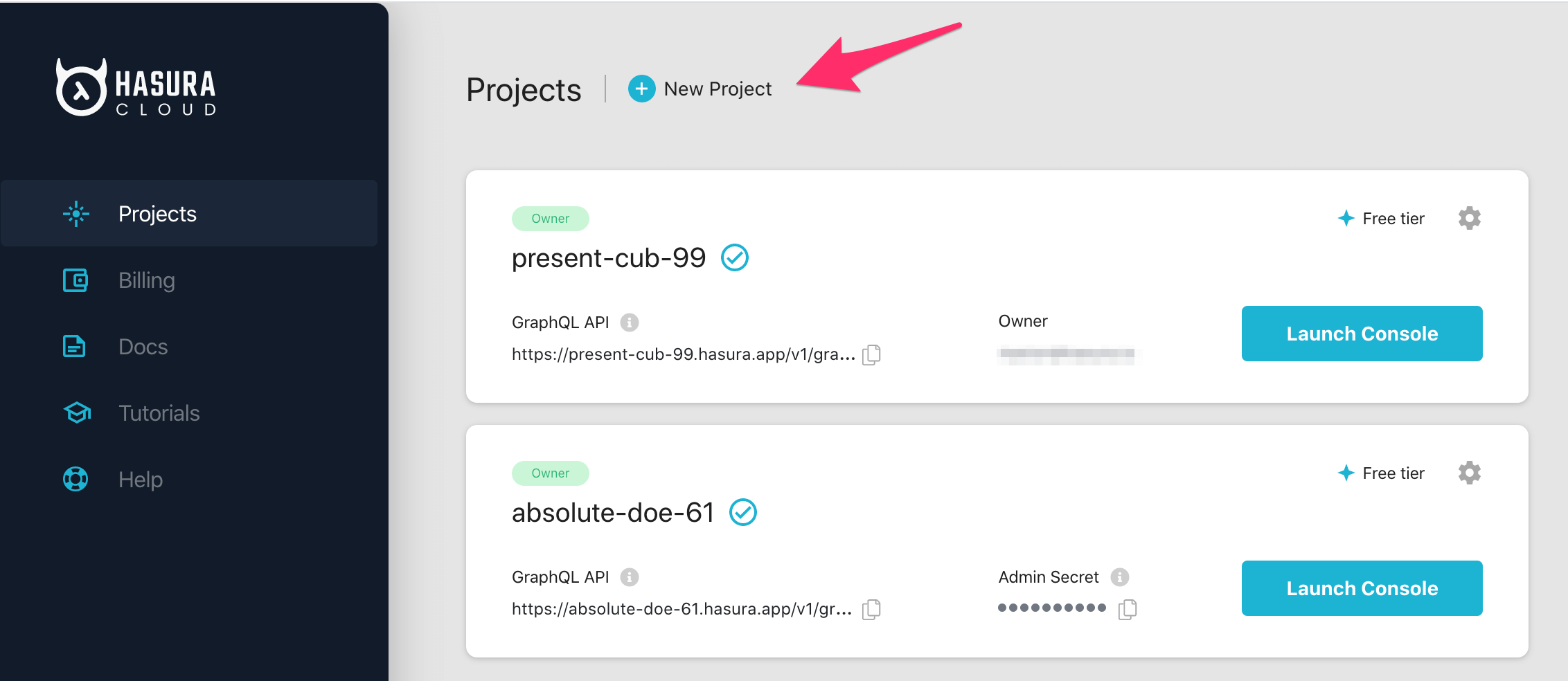
You will get prompted for a Postgres Database URL. We will create this in the next step and then come back here.
After the project is initialized successfully, click on Launch console to open the Hasura console in your browser.
On the Hasura console, navigate to Data -> Manage -> Connect Database -> Connect existing database:
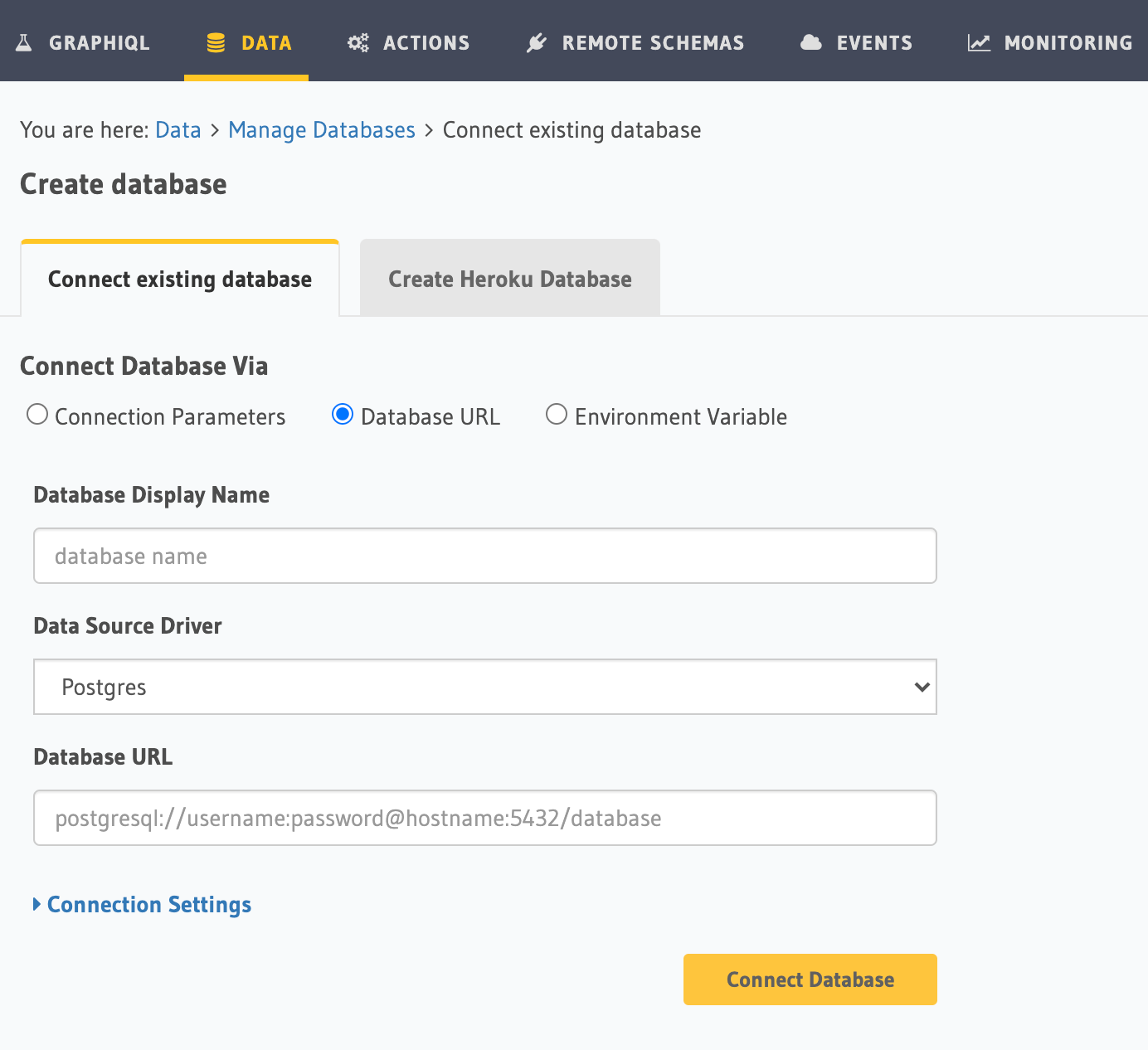
Step 2: Create a Postgres DB on Timescale (skip if you have an existing DB)¶
Log into the Timescale Cloud portal.
On the Timescale dashboard, under Services, click on + Create new service:
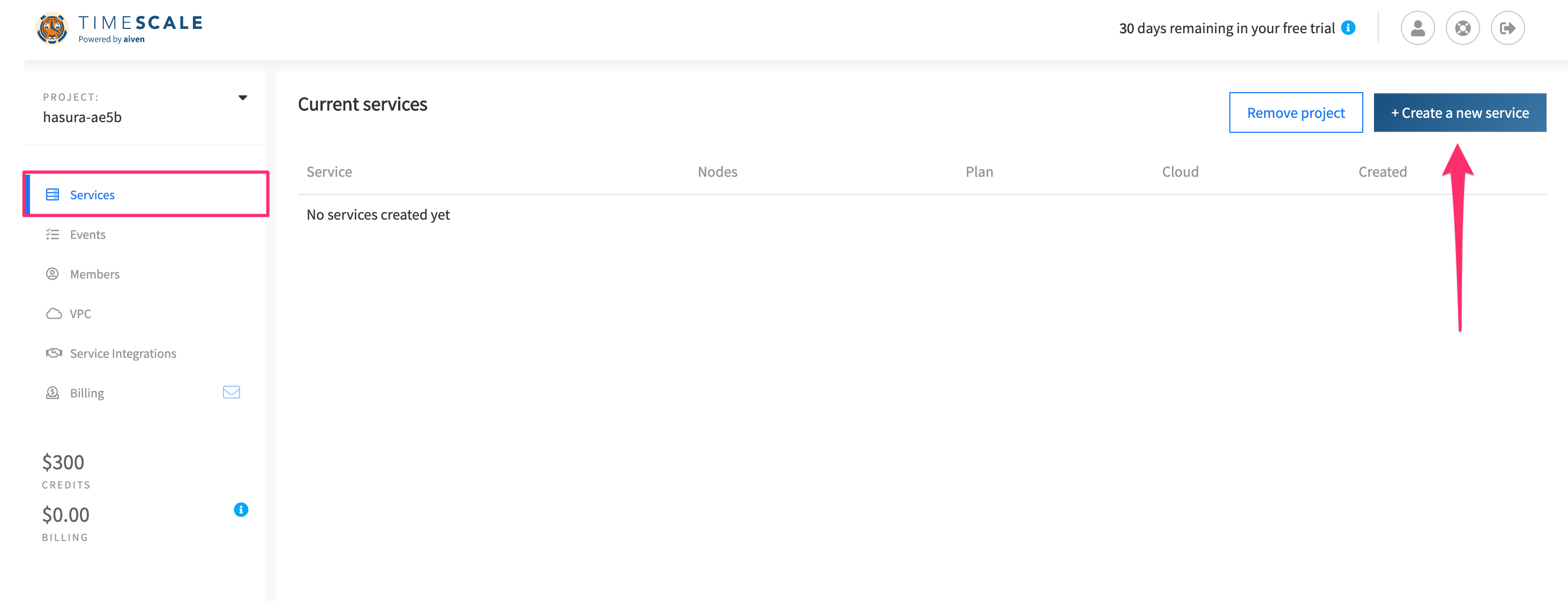
Select the Postgres option:
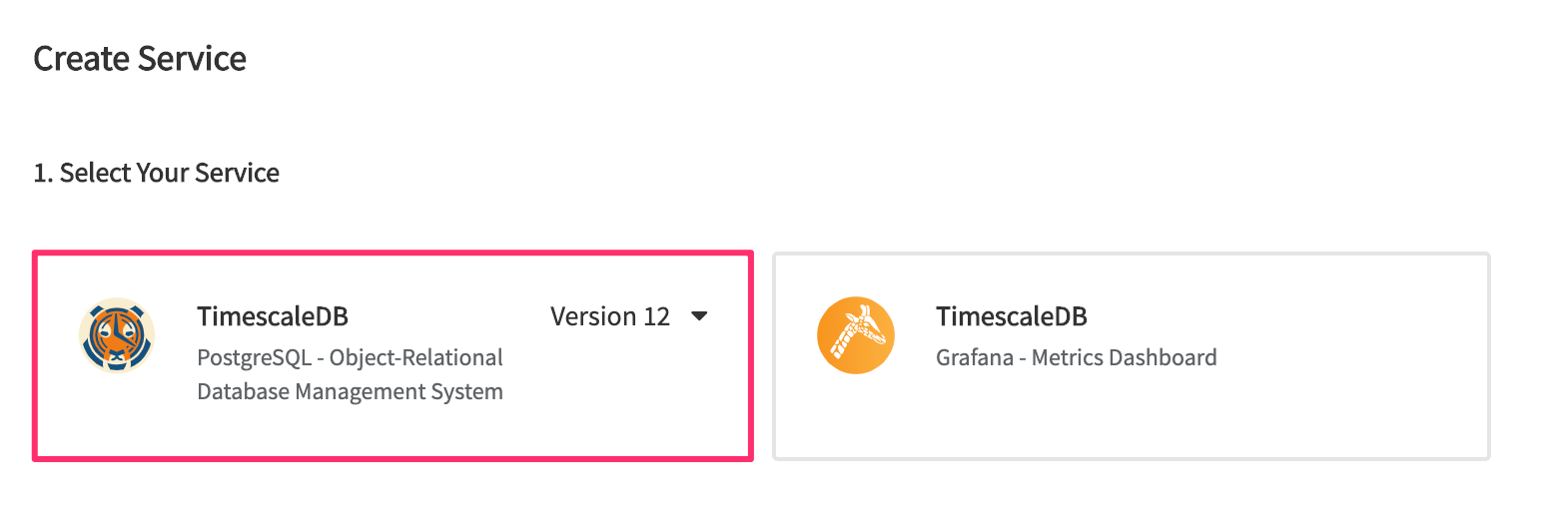
Scroll down and select the Cloud Provider, Region and Service Plan based on your requirements.
In the end, enter a Name for the service:

Then click Create service.
Note
If you’re using a database user other than the default one, make sure to give it the right Postgres permissions.
Step 3: Allow connections to your DB from Hasura Cloud¶
On the Services dashboard, click on your DB:

Scroll down to Allowed IP Addresses and click on Change:

Copy the IP address from the copy icon in the Hasura Cloud IP field on the project’s details view on Hasura Cloud.

Add the Hasura IP address that you copied, click on the + and then click on Save changes:
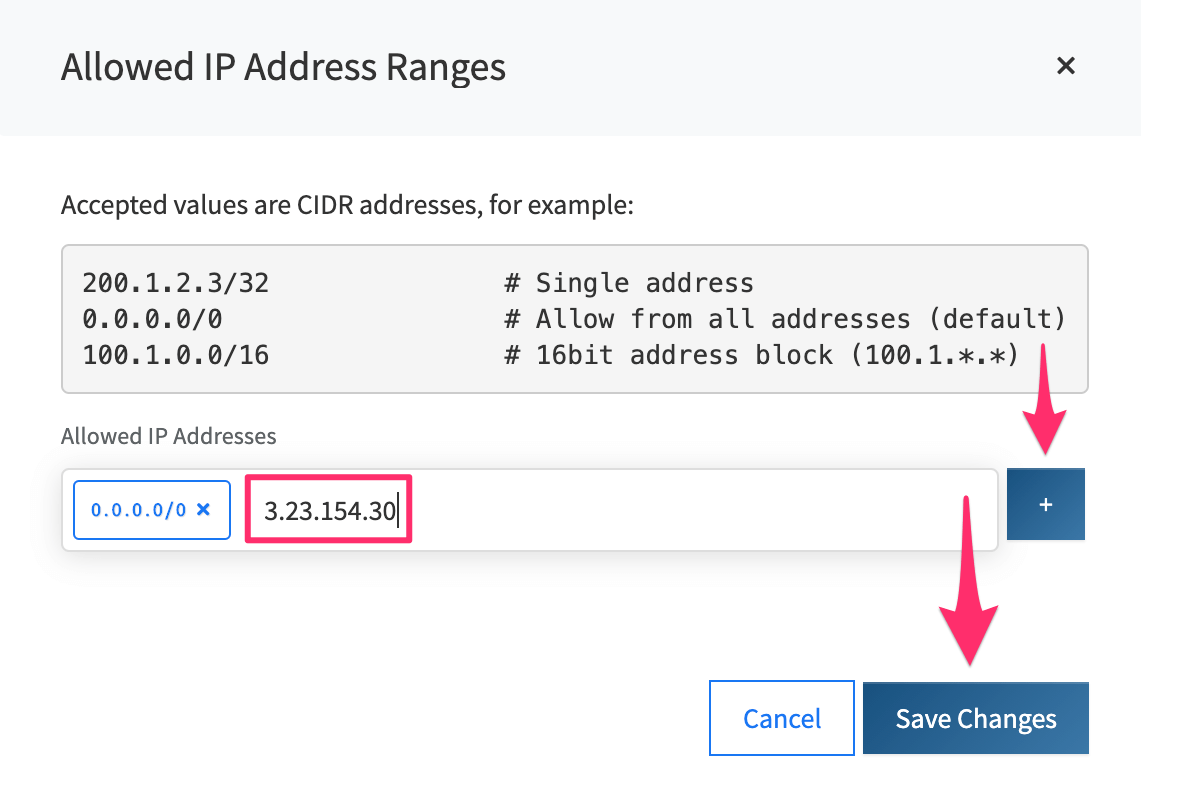
Step 4: Get the database connection URL¶
The structure of the database connection URL looks as follows:
postgresql://<user-name>:<password>@<public-ip>:<postgres-port>/<db>
To get it, navigate to the Overview tab of your database dashboard and copy the Service URI:

Step 5: Finish connecting the database¶
Back on Hasura Console, enter the database URL that we retrieved in step 4:
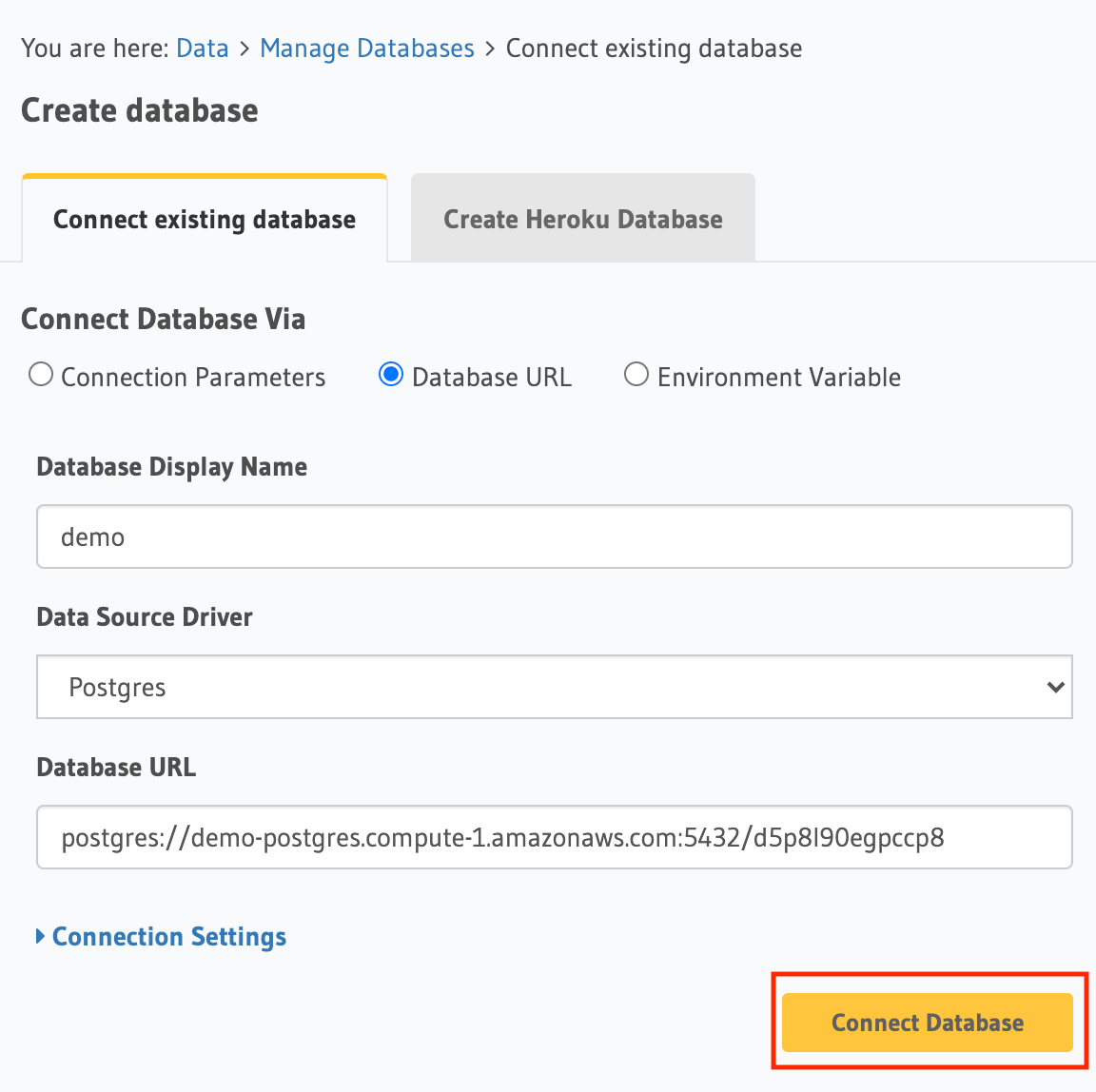
Then click Connect Database.
Note
For security reasons, it is recommended to set database URLs as env vars and using the env vars to connect to the databases in place of the raw database URLs.
Voilà. You are ready to start developing.
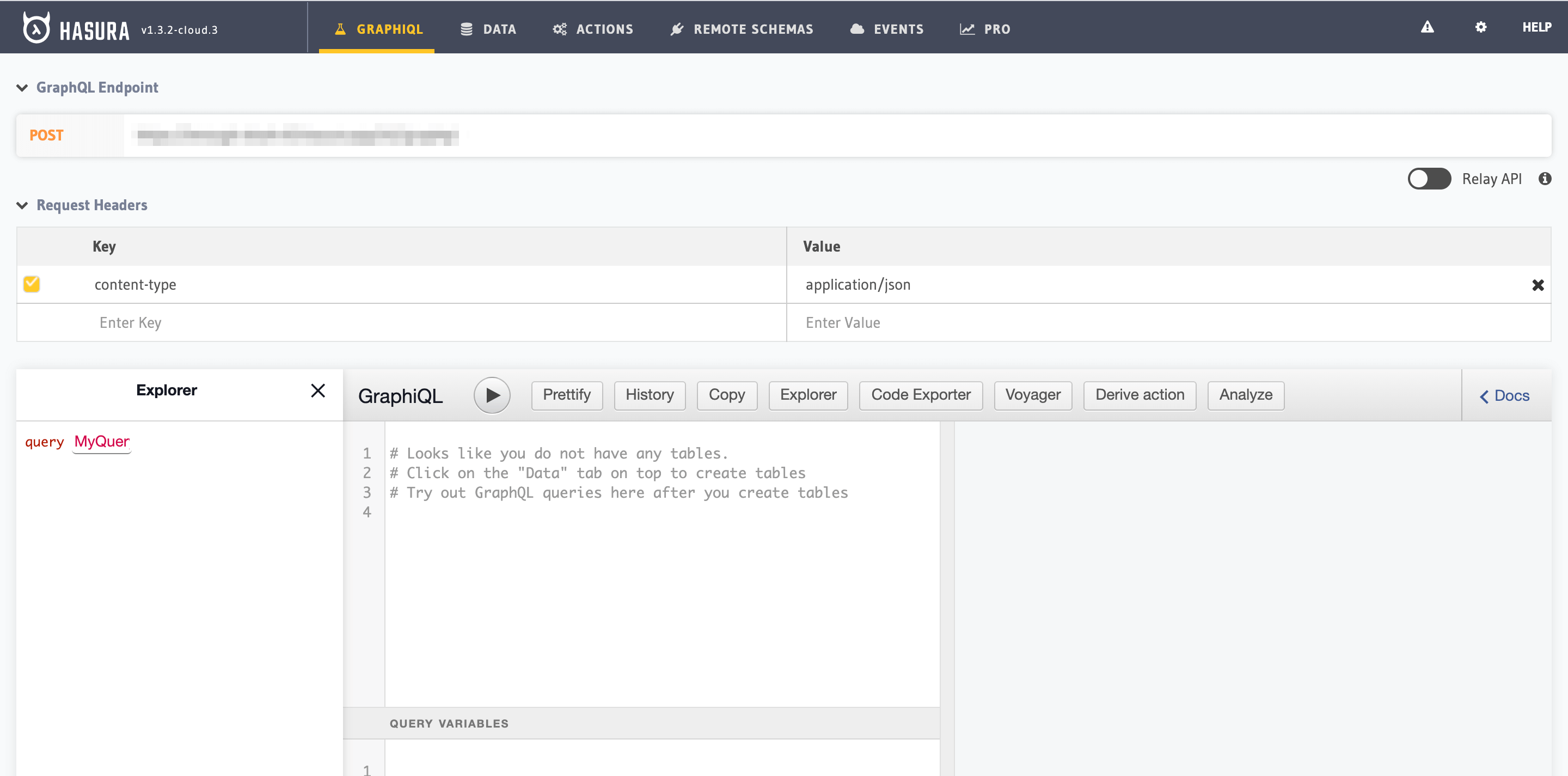
Next steps¶
You can check out our 30-Minute Hasura Basics Course and other GraphQL & Hasura Courses for a more detailed introduction to Hasura.
You can also click the gear icon to manage your Hasura Cloud project. (e.g. add collaborators, env vars or custom domains).

